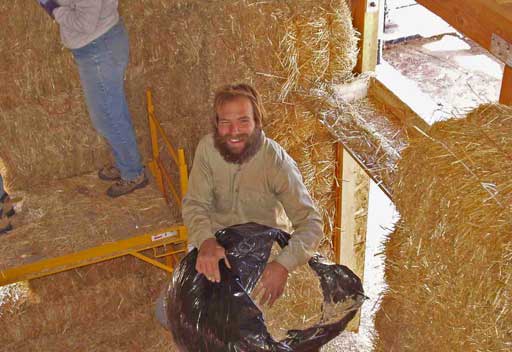A product of earthy integrity, straw bale owns a place in the design and construction world. Originally, early homesteaders used bales and sod a century ago in the heartland to build houses, some of which survive today. The massive proportions of bale walls support designs that sit solidly on the earth, and that can be elegantly simple or intelligently complex. Its use in direct load-bearing applications has been sanctioned by building officials largely as the result of work by DCAT (Development Center for Appropriate Technology.) Others choose the increased design freedom afforded by an internal post and beam framework to support the home’s roof, leaving the straw bale as the design baseline for the material’s unique dimensionality.

